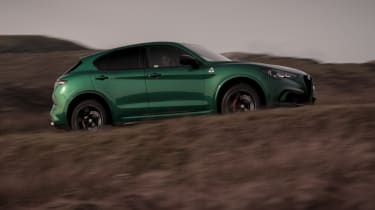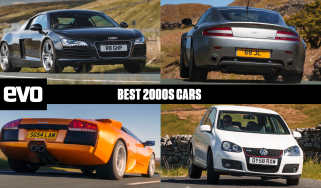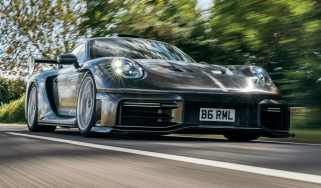Alfa Romeo Stelvio Quadrifoglio – ride and handling
Giulia-derived chassis is more agile and entertaining than many rivals
From the get-go the Stelvio Q feels light and responsive and benefits from the quick and direct steering similar to the Giulia Quadrifoglio’s, giving it a level of response that’s unmatched for a tallish SUV weighing the wrong side of 1800kg. The steering’s interaction with the wheels is backed up by the Quad’s intense geometry set-up, which like the most aggressive sports and supercars compromises on day-to-day useability – the turning circle is poor, and there’s more scrub on full-lock than some other cars – for the sake of front-end grip and response.
The front axle puts its power down well, and the steering remains largely free of corruption. It mostly feels like the Stelvio is rear-wheel drive with an unnatural amount of traction – a similar feeling to that felt on modern BMW M products with xDrive fitted.
> Alfa Romeo 4C – the car world's greatest misses
Overall, the 2.9-litre V6 loses none of its brio with the extra weight and driven wheels attached to it. Left in automatic mode the ZF delivers each ratio with a relatively seamless shift, but as with the Giulia, you’ll likely want to use the beautiful aluminium paddles fitted to the steering column and change gear yourself. Unless you’re in Race mode, the gearbox doesn’t downshift as you approach a corner, instead waiting for you to get on the power before kicking down.
It’s worthwhile to select Dynamic or Race mode on the DNA system, even if you’re using manual mode, because not only do the throttle’s response and the ZF’s shifts sharpen up, but the ESP loosens its reins, too (it switches off altogether in Race mode) and the exhaust valves open to increase the volume.
The DNA settings also alter the dampers’ stiffness. In all modes, the ride is much less pliant and forgiving than the Giulia Quadrifoglio, particularly so in Dynamic. The upside is that body roll and pitch is better contained in Dynamic and the firmer-still Race, though bumps can make the Stelvio feel bouncy and unsettled. However, the damper button in the middle of the DNA dial allows you to tone down the dampers by one setting, so in Race mode you can select the Dynamic damper setting, and in Dynamic the Natural setting, and so forth.
Although the 21-inch wheel option holds plenty of visual appeal, it further impacts the ride quality, so it’s worth test driving this option before making a decision; the standard 20-inch wheels are likely to be a comfier choice.




